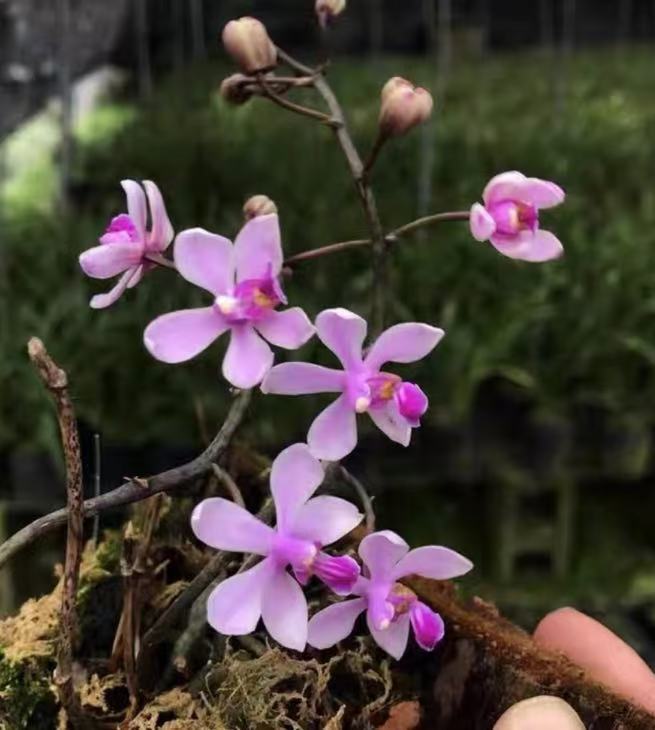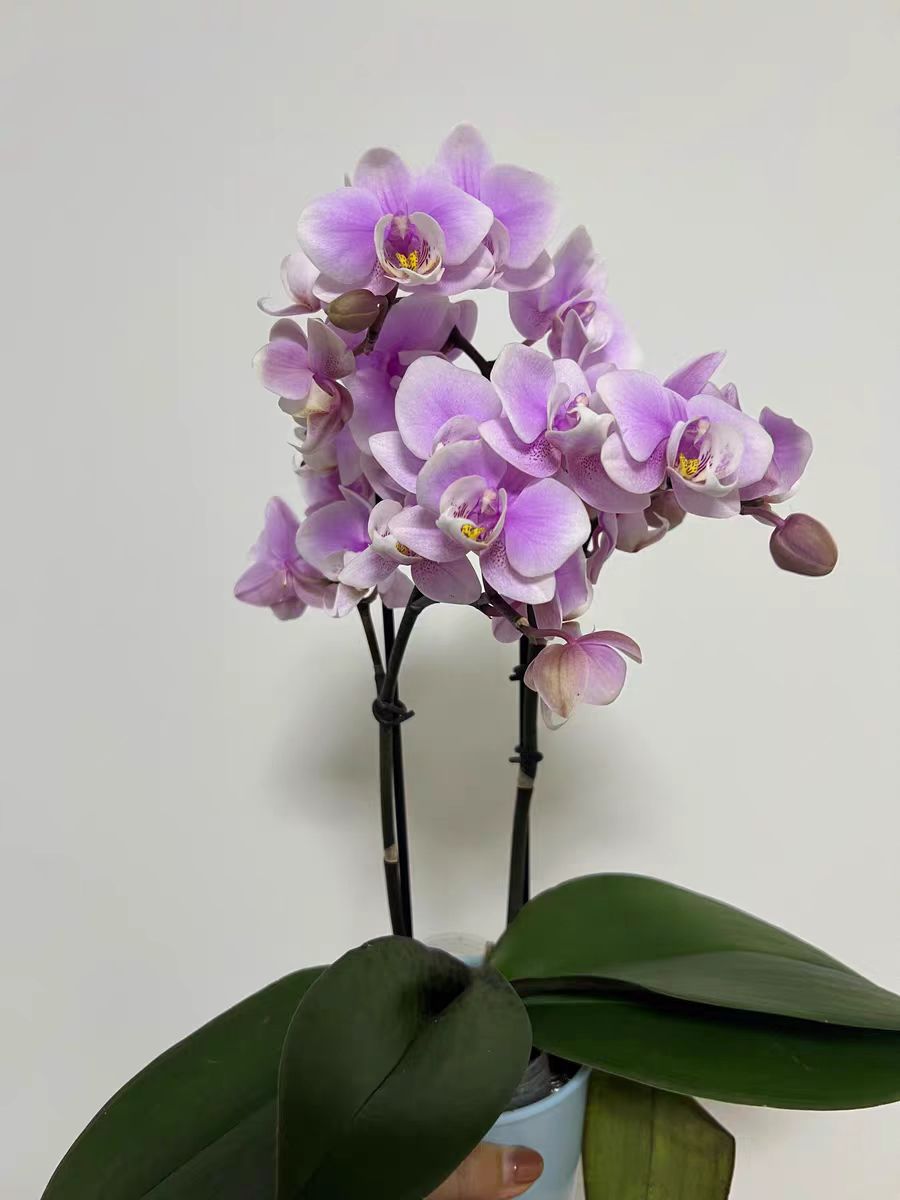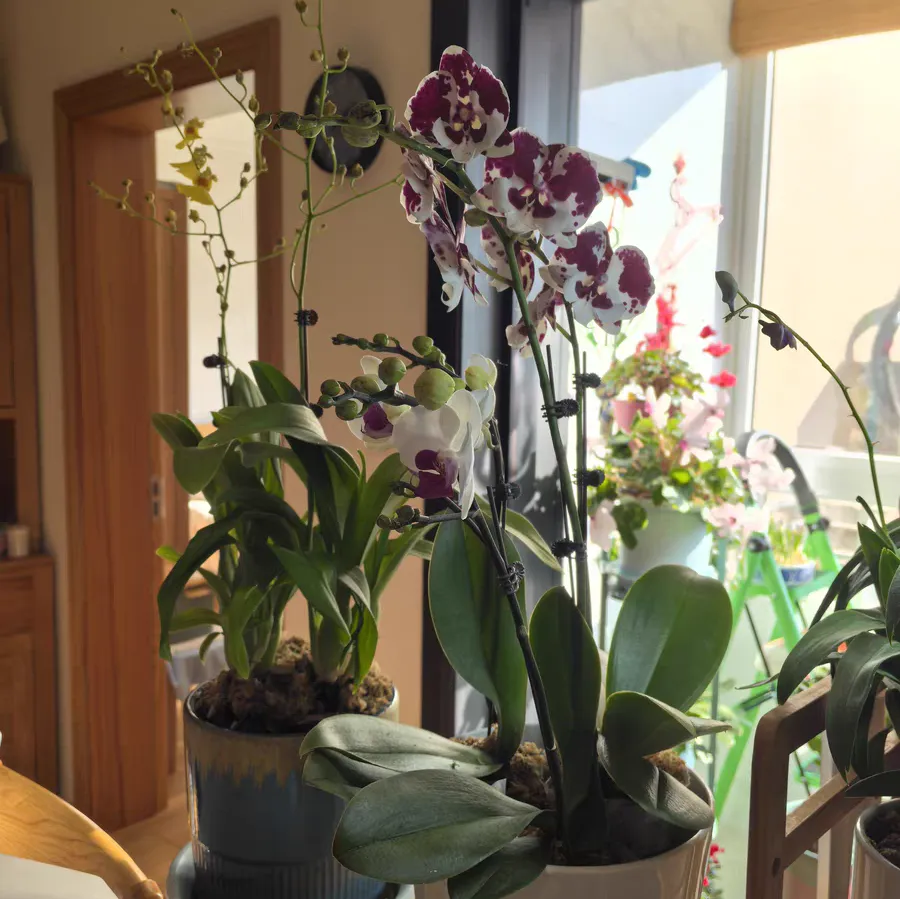Phalaenopsis wilsonii, a beautiful and unique plant, is not only loved by people for its elegant posture and gorgeous flowers, but also attracts widespread attention due to its rarity and endangered status. So, is Phalaenopsis wilsonii really a protected plant? Can it grow in home potted plants?
Phalaenopsis wilsonii is an epiphytic herbaceous plant belonging to the genus Phalaenopsis in the Orchidaceae family, and it is one of the native Phalaenopsis species in China. It is not only listed as a first - class protected wild plant in China, but also included in the "IUCN Red List of Threatened Species" as a Vulnerable (VU) species, and in Appendix II of the Convention on International Trade in Endangered Species of Wild Fauna and Flora (CITES). All these honors demonstrate the rarity and endangerment of Phalaenopsis wilsonii.
In the wild, Phalaenopsis wilsonii is mainly distributed in Yunnan, Guangxi, Guizhou, Sichuan and other places in China. It usually attaches to tall trees. Its aerial roots are clustered, developed, long and curved, with densely growing warty protrusions on the surface. Its beautiful flowers and unique growth habits make it a research object that botanists and gardening enthusiasts compete to study.
Although Phalaenopsis wilsonii has a special growth environment in the wild, it doesn't mean it can't grow in home potted plants. In fact, as long as the correct maintenance methods are mastered, Phalaenopsis wilsonii can fully display its charming charm in home potted plants.
Potted Environment and Containers: Phalaenopsis wilsonii likes a semi - sunny environment, that is, it needs sufficient sunlight but should not be directly exposed to the sun. Therefore, when planting indoors, a position near the window can be selected, and it can be maintained with scattered light to avoid direct sunlight. At the same time, the suitable growth temperature is 18°C - 26°C. In winter, the minimum temperature should be kept above 10°C, and in summer, the maximum temperature should not exceed 35°C.
When choosing containers, ceramic pots or plastic pots with drainage holes can be selected as planting containers. A layer of ceramsite or stones can be laid at the bottom to increase air permeability. In addition, Phalaenopsis wilsonii has a high requirement for humidity, generally maintaining it between 50% - 70%. Air humidity can be increased by spraying water, etc., but pay attention to avoiding waterlogging to prevent root rot.
Potted Substrate and Planting: Phalaenopsis wilsonii likes loose, well - drained and nutrient - rich soil. It can be prepared by mixing leaf - mold soil, peat soil and perlite in a certain proportion, or it can be cultivated with epiphytic substrates such as sphagnum moss and orchid stones. When planting, it can be propagated by division. Dig out the mature bulbs of Phalaenopsis wilsonii, keep 2 - 3 leaves for each bulb, and then plant them in the prepared soil. When planting, ensure that the bulbs are stable, and the soil should cover up to the base of the bulbs.
Daily Maintenance: During the maintenance of Phalaenopsis wilsonii, watering should follow the principle of "watering when the soil is dry and thoroughly soaking the soil", that is, water thoroughly after finding that the surface of the soil is dry. Avoid watering on the flowers to prevent rotting. At the same time, Phalaenopsis wilsonii has a large demand for fertilizers. Apply liquid fertilizer or slow - release fertilizer once a month during the growth period. In spring and summer, more nitrogen - based fertilizers can be applied to promote plant growth; in autumn and winter, more phosphorus - based fertilizers can be applied, which helps with flower bud differentiation and blooming.
As a first - class protected wild plant in China, the rarity and endangerment of Phalaenopsis wilsonii are self - evident. However, through the correct home potted plant maintenance methods, we can fully enjoy this beautiful and unique plant at home. While enjoying the beauty it brings, let's also contribute to the protection of this rare species!
Is Phalaenopsis wilsonii a protected plant?

Share with
Tagged in :




Leave a Reply